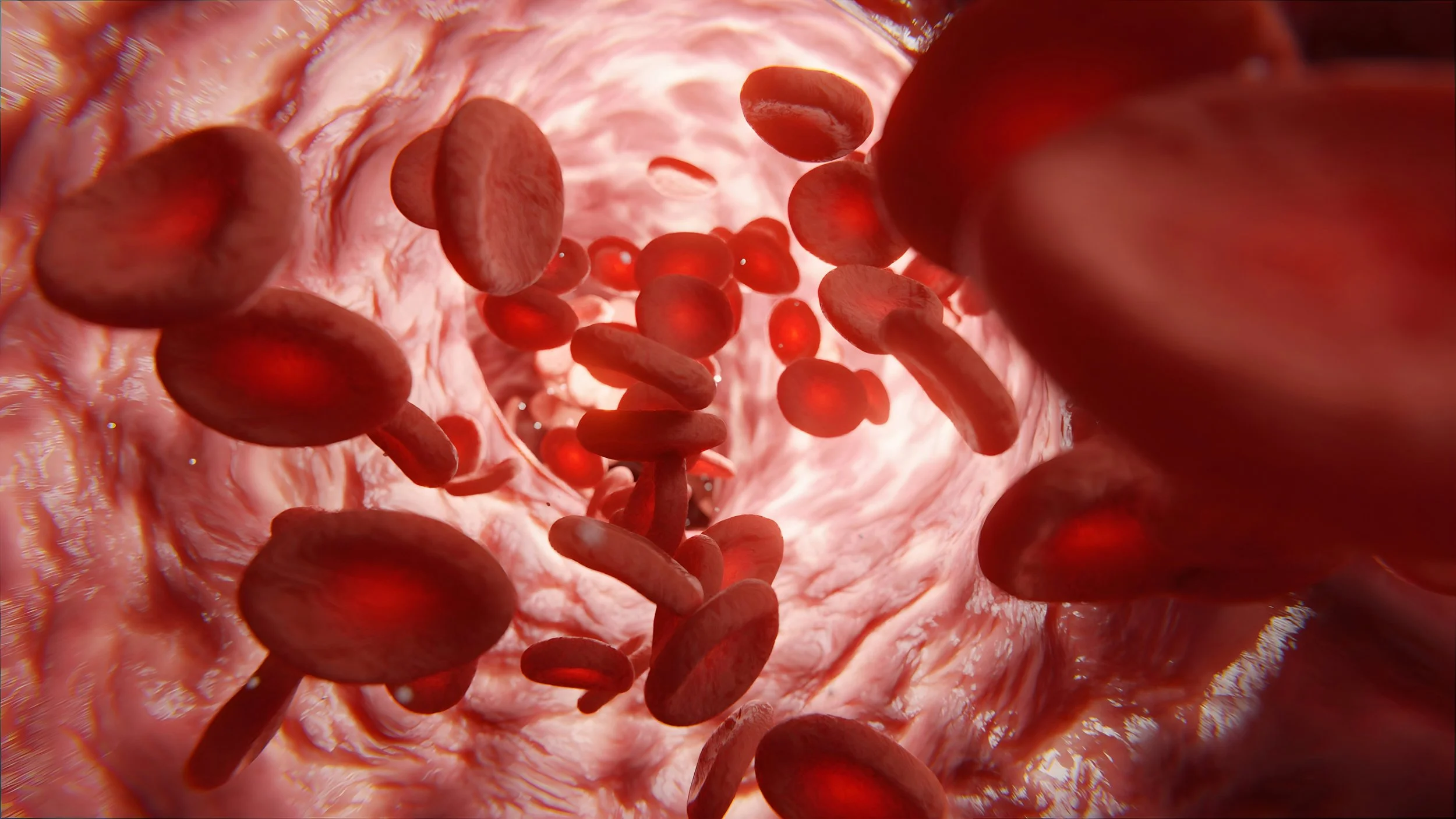Chronic Venous Insufficiency: Understanding, Living With, and Overcoming Vein Disease
Julian J. Javier, MD and Tracey Roth, MD, FACC of Naples Cardiac and Endovascular Center, shed light on chronic venous insufficiency (CVI)—a common circulatory issue that affects millions of adults. With symptoms like leg swelling, skin discoloration, and varicose veins, CVI can significantly impact daily life if left untreated. Discover how timely diagnosis and personalized vein care can improve circulation, reduce discomfort, and support long-term vascular health.
Life can present unexpected health challenges, and receiving a new diagnosis often brings questions and concerns. Chronic venous insufficiency (CVI) is a condition that affects thousands of individuals each year, including many here in Naples, Florida. If you or someone you care about is navigating life with CVI, it’s important to know that support, solutions, and expert guidance are within reach. With the right care team and a personalized treatment plan, most people with CVI can experience relief and maintain a vibrant, active lifestyle.
Below, we provide a supportive guide to understanding CVI, based on the latest knowledge and our experience caring for patients at Naples Cardiac and Endovascular Center. We’ll explore the causes, symptoms, and a range of treatment options, highlighting how a thoughtful, patient-centered approach can make a meaningful difference.
What Is Chronic Venous Insufficiency?
Chronic venous insufficiency is a type of vein disease that interferes with the return of blood from the legs back to the heart. In healthy veins, one-way valves keep blood flowing upward. When these valves become weakened or damaged, blood may begin to pool in the lower legs. Over time, this can cause swelling, discomfort, and visible changes in the skin.
Who Is Affected by CVI?
While anyone can develop CVI, the condition is more common in adults over 50. It also occurs more frequently in women and individuals with a family history of vein problems. Sedentary lifestyles, prolonged standing, obesity, and certain medical conditions can also increase the likelihood of developing CVI.
Is CVI Dangerous?
CVI is not typically life-threatening, but it can significantly affect your quality of life. Left untreated, it may lead to complications such as leg ulcers, skin infections, or ongoing discomfort. The good news is that with early detection and proper management, symptoms can be minimized, and long-term issues can often be avoided.
Causes of Chronic Venous Insufficiency
Understanding what contributes to CVI is an important step toward managing it effectively. Common causes and risk factors include:
Valve dysfunction: When vein valves weaken, blood may flow backward and build up in the veins.
Aging: As we age, vein walls and valves may naturally lose strength and flexibility.
Limited movement: Sitting or standing for long periods can impair circulation and strain the veins.
Weight concerns: Carrying extra weight increases pressure on leg veins.
Previous blood clots or vein injuries: Deep vein thrombosis (DVT) or trauma to the leg can damage the veins.
Chronic conditions: Conditions such as heart disease, diabetes, and sleep apnea may further stress the vascular system.
It’s important to note that CVI is a medical condition, not a reflection of lifestyle alone. Many of the contributing factors are outside of personal control.
Recognizing the Symptoms of CVI
Knowing the signs of chronic venous insufficiency can help you seek care early and prevent progression. Common symptoms include:
Swelling in the lower legs and ankles, especially after long periods of sitting or standing
A feeling of heaviness, aching, or cramping in the legs
Itching or tingling sensations near the veins
Varicose veins that appear twisted and enlarged
Skin changes around the ankles, such as discoloration, thickening, or dryness
Slow-healing wounds or ulcers on the lower legs
If you notice any of these symptoms, it may be time to consult a vein specialist who can evaluate your condition and offer guidance on next steps.
Why Awareness Around CVI Is Growing
Public awareness around chronic venous insufficiency has grown in recent years as more people seek answers for persistent leg discomfort and swelling. As people are living longer and remaining active well into their 60s, 70s, and beyond, understanding vein health has become increasingly important. CVI is common, manageable, and treatable—especially when caught early and cared for consistently.
At Naples Cardiac & Endovascular Center, our team of board-certified providers works with patients to detect CVI early and create customized treatment plans based on your unique symptoms, health history, and lifestyle.
How CVI Is Diagnosed
If you're experiencing symptoms, a diagnosis often starts with a physical exam and a conversation about your health history. Diagnostic tools like venous Doppler ultrasound allow providers to visualize the blood flow in your legs and identify where valves may not be working properly.
This non-invasive test is quick, comfortable, and an essential step in determining the right course of treatment.
Personalized Treatment Options for CVI
Managing chronic venous insufficiency doesn’t have to mean major lifestyle disruption. Many effective treatments are minimally invasive and tailored to your comfort and preferences. At Naples Cardiac & Endovascular Center, we work closely with each patient to develop an individualized care plan. Here are some of the most common treatment options:
1. Lifestyle Modifications
Elevating your legs regularly to reduce pressure
Gentle daily movement such as walking or light stretching
Wearing supportive, low-heeled shoes
Avoiding prolonged standing or sitting
Maintaining a healthy weight for reduced vein strain
2. Compression Therapy
Compression stockings apply gentle pressure to the legs, helping blood move more efficiently. These garments are available in various levels of compression, and your provider will recommend a style that fits your needs and symptoms.
3. Medication
In some cases, medications may be prescribed to reduce inflammation or manage swelling. These might include low-dose aspirin, mild diuretics, or medications to improve vein tone—always under medical supervision.
4. Minimally Invasive Procedures
Sclerotherapy: Involves injecting a solution into affected veins, causing them to collapse and reroute blood flow
Endovenous ablation: Uses radiofrequency or laser energy to close malfunctioning veins
Microphlebectomy: A minor procedure to remove varicose veins through small incisions
These procedures are typically done in-office, involve minimal recovery time, and offer long-term symptom relief.
The Importance of Personalized, Ongoing Care
Living with CVI is an ongoing journey, but you don’t have to navigate it alone. A personalized care approach offers meaningful benefits, including:
A dedicated provider who understands your full health picture
Flexible appointments and responsive communication
Time to ask questions and receive clear explanations
Proactive monitoring to catch issues early
Care plans that consider your lifestyle, goals, and daily routine
At Naples Cardiac & Endovascular Center, we believe in treating the whole person, not just the symptoms. Our team is committed to helping you feel confident, supported, and in control of your vein health.
Taking Charge of Your Vein Health
Small, consistent steps can lead to greater comfort and long-term improvement. If you're ready to take charge of your vein health, consider starting with these actions:
Schedule a consultation with a board-certified vein specialist
Begin light daily activity, such as walking for 15–30 minutes
Try elevating your legs above heart level a few times a day
Wear loose, comfortable clothing that doesn't restrict circulation
Ask about compression stockings that are right for you
These lifestyle adjustments, paired with professional support, can make a noticeable difference in how your legs feel each day.
If you're experiencing symptoms, a diagnosis often begins with a physical exam and a conversation about your health history. Diagnostic tools like venous Doppler ultrasound allow providers to visualize the blood flow in your legs and identify where valves may not be working properly. This non-invasive test is quick, comfortable, and an essential step in determining the right course of treatment.
At Naples Cardiac & Endovascular Center, you’ll also benefit from the expertise of Dr. Julian Javier, one of the only cardiologists in the region trained in superficial venous disease. He regularly speaks at the Miami International Vein Conference and utilizes two patented machines for advanced treatment, offering patients access to specialized care not widely available in the area.
Your Next Step Toward Relief
Chronic venous insufficiency is a manageable condition that affects many people. With the right diagnosis, personalized care plan, and ongoing support, it is entirely possible to live a comfortable and active life.
At Naples Cardiac and Endovascular Center, you’ll be seen by a specialist—not a nurse practitioner or physician assistant—ensuring expert, personalized attention from the start. In select cases, our physicians are also available to accompany patients to the hospital, providing continuity of care when it matters most.
If you’re noticing signs of vein disease or have questions about your leg health, our team is here to help. We offer expert evaluations, advanced treatment options, and a warm, welcoming environment where your concerns are always heard.
Take the first step toward feeling better. Contact us today to schedule your consultation and discover how personalized vein care can support your well-being and lifestyle.
Book a consultation or call (239) 300-0586 for more information




